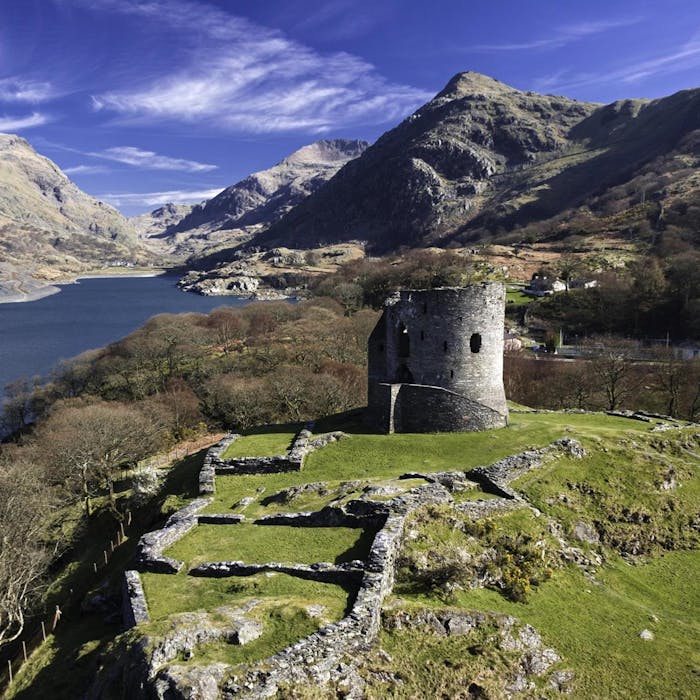
Dolbadarn Castle - a ruined north Wales fortress
Dolbadarn Castle is a fortification built by the Welsh prince Llywelyn the Great during the early 13th century, at the base of the Llanberis Pass, in northern Wales. The castle was important both militarily and as a symbol of Llywelyn's power and authority.
Dnolbadarn Castle was built in either the 1220s or the 1230s. Traditionally the Welsh princes had not constructed castles, instead using undefended palaces called llysoedd, or courts. From the late 11th century onwards, the Normans had advanced into Wales, taking lands in the north and establishing a band of occupied territory in the south called the Welsh Marches, with some timber and earthwork castles beginning to be built.
Llywelyn the Great initially controlled the princedom of Gwynedd, but grew more powerful over the course of his reign. He was faced by several challenges, including dealing with the threat from the kings of England, and maintaining his authority over the native Welsh. As part of this strategy, Llywelyn built Castell y Bere, an innovative stone Welsh castle, in the 1220s. Shortly afterwards he began the first phases of Dolbadarn Castle, constructing the initial stone fortifications of the site.
As part of his strategy for dealing with the Marcher Lords, Llywelyn married his eldest son to the daughter of a powerful lord in Brecon, Builth and Abergavenny. This introduced him to a style of stone castle that included circular keeps and an integrated system of curtain walls. In a second phase of building at Dolbadarn, probably in the 1240s, Llewelyn added such elements to the existing castle.
Following Llywelyn's death in 1240, Gwynedd's power declined and many of its eastern lands were taken by Henry III of England. The conflict between the Welsh princes and the English kings continued into the reign of Edward I. In 1282 Llewelyn (grandson of the Great) fought a final campaign against Edward, ending in the prince's death near Builth. His brother, Dafydd ap Gruffydd, assumed power, but during 1283 was forced south into Snowdonia, to be based at Dolbadarn. Edward deployed 7,000 troops to finally capture and execute Dafydd.
Determined to prevent any further rebellion in North Wales, Edward set about building a sequence of new castles and walled towns, with a new principality governed from Caernarfon. Dolbadarn was no longer relevant and within two years timber from the castle was being used for the construction of Caernarfon Castle.
Ruined and uninhabited, from the mid-eighteenth century, Dolbadarn became a popular topic for painters. J. M. W. Turner's 1800 work depicted the back-lit castle looming over the landscape.
In 1941 the castle was given to the State by then owner Sir Michael Duff. It is now maintained by Cadw, the Welsh heritage body, as s a Grade I listed building and scheduled monument.
Further reading
Links to external websites are not maintained by Bite Sized Britain. They are provided to give users access to additional information. Bite Sized Britain is not responsible for the content of these external websites.
